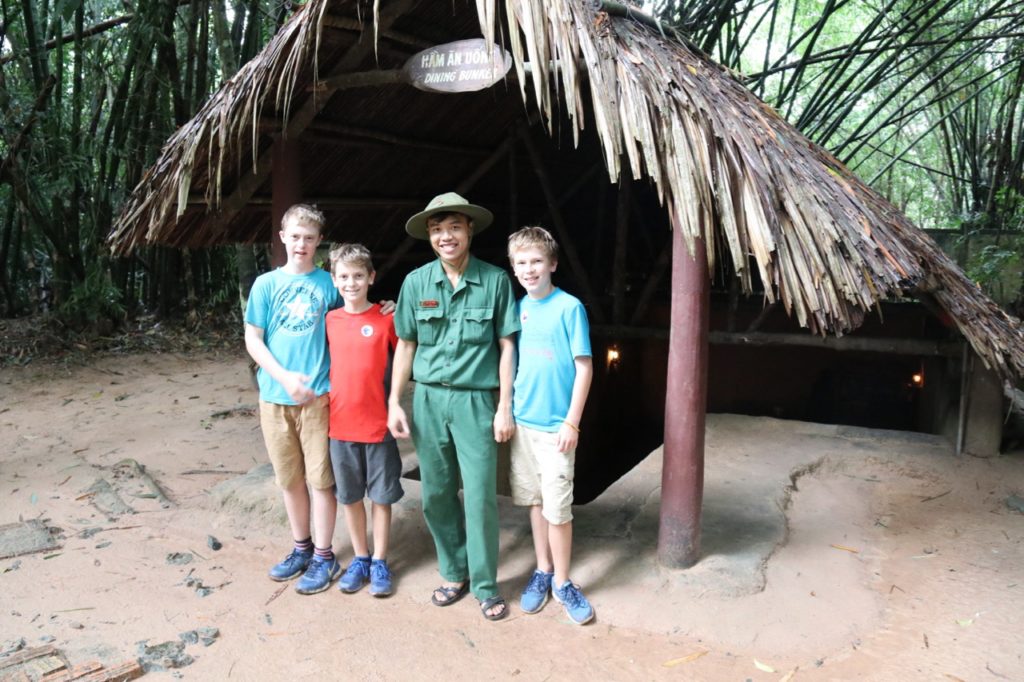Ho Chi Minh City, Vietnam’s largest city, is located in the southern portion of the country. This city was called Saigon until 1976, when the name was changed to Ho Chi Minh City after the revolutionary leader. Many people still refer to it as Saigon. The city is usually a quick stop on most visitor’s itineraries in Vietnam and for us it was no different. We had less than a day in the city and focussed our time on visiting the Cu Chi Tunnels.
The tunnels of Cu Chi are an immense network of connecting underground tunnels located in the Cu Chi District of Ho Chi Minh City, and are part of a much larger network of tunnels that underlie much of the country. In Cu Chi alone there were over 250 kilometres of tunnels. In South Vietnam, the US was fighting against the Viet Cong. It was in these tunnels that the Viet Cong lived, stored supplies, made weapons, and were able to evade US forces. The Cu Chi Tunnels are now a major tourist destination from Ho Chi Minh City.
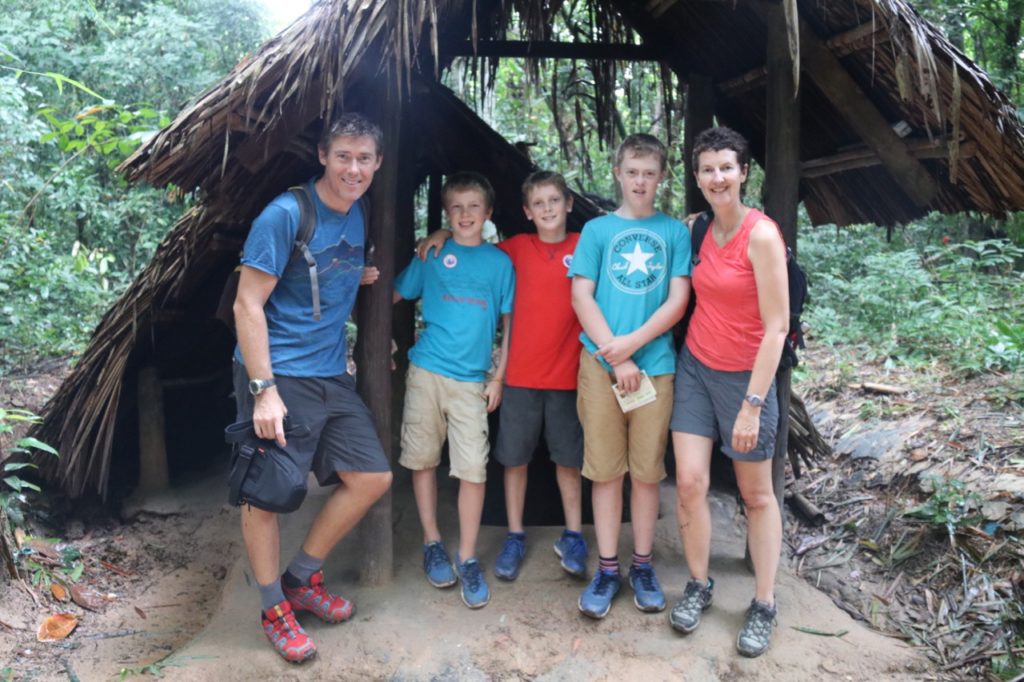
We travelled to the Cu Chi Tunnels on our way from the Mekong Delta to Ho Chi Minh City. They are located about 1.5 hours from Ho Chi Minh City. Our visit started with us watching a propaganda movie filmed in 1967 by Viet Cong forces, trying to persuade the Vietnamese to fight against the Americans. We then went on to visit the tunnels. Here we were able to crawl through various sections, and learn a little more about the war. Prepare to get dirty and hot.
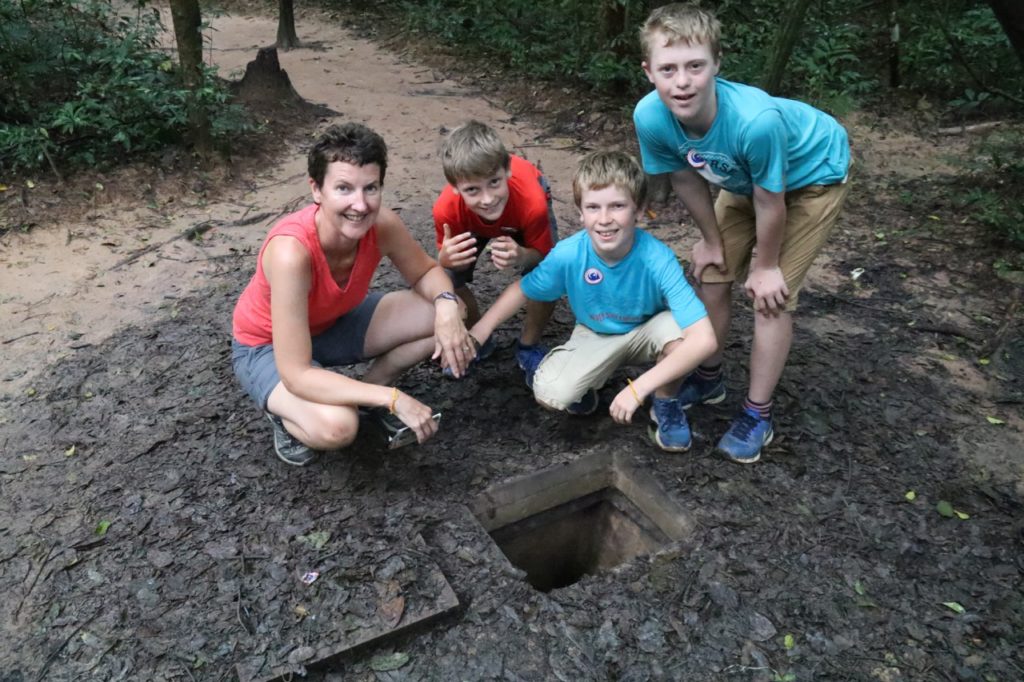
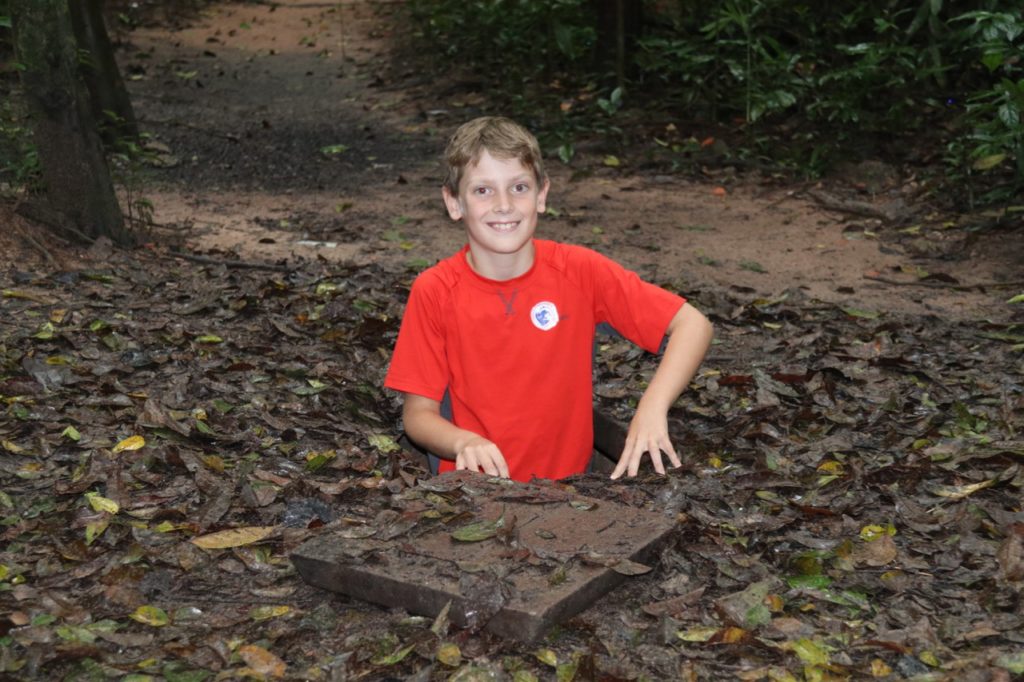
The trapdoors were tiny, more suitable for children than adults!
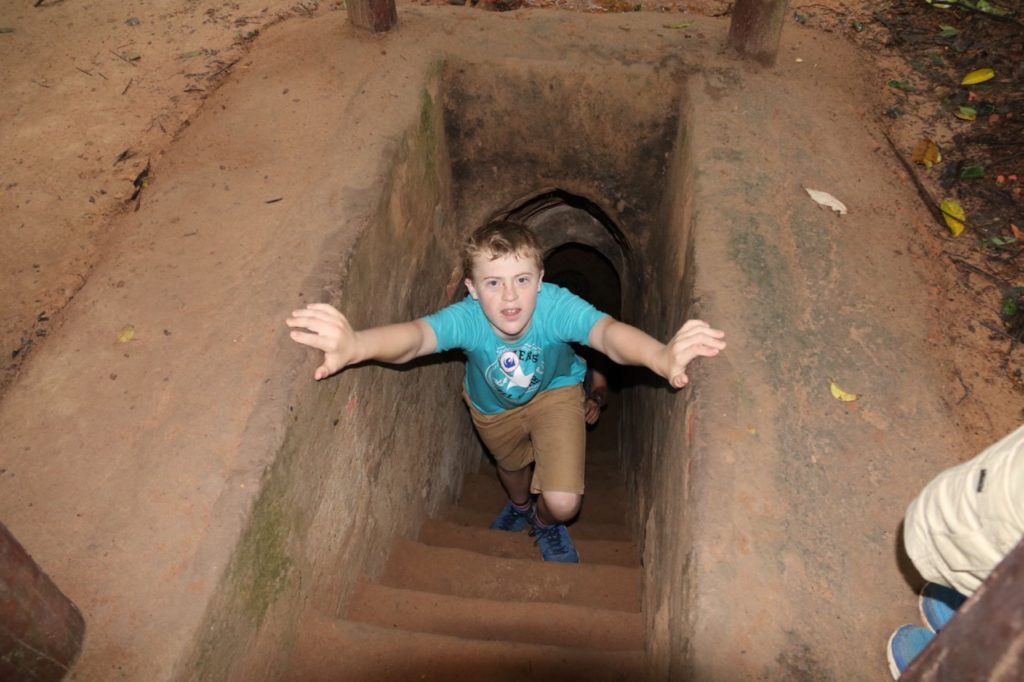
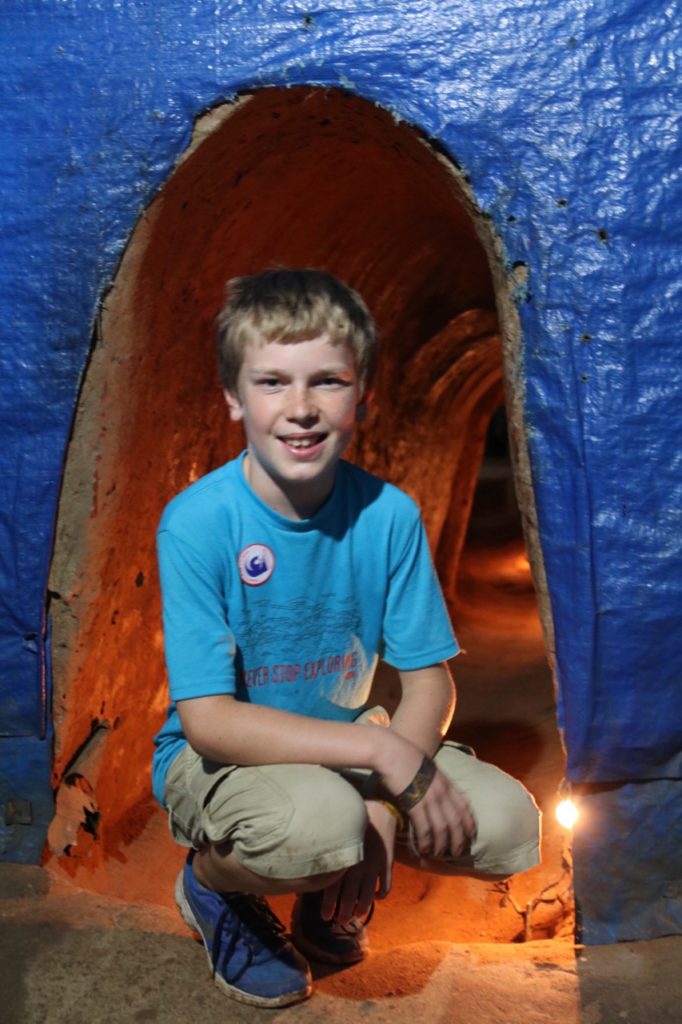
It was fascinating to learn of the simple things the Viet Cong did to make them so elusive. Their network of tunnels was extensive and elaborate, sometimes several storeys deep. It included innumerable trapdoors, living areas, kitchens, command centres, storage facilities and weapons factories. There were even makeshift hospitals where wounds were tended and children were born. Life underground was hard. It was hot and stuffy, with very little light or oxygen.
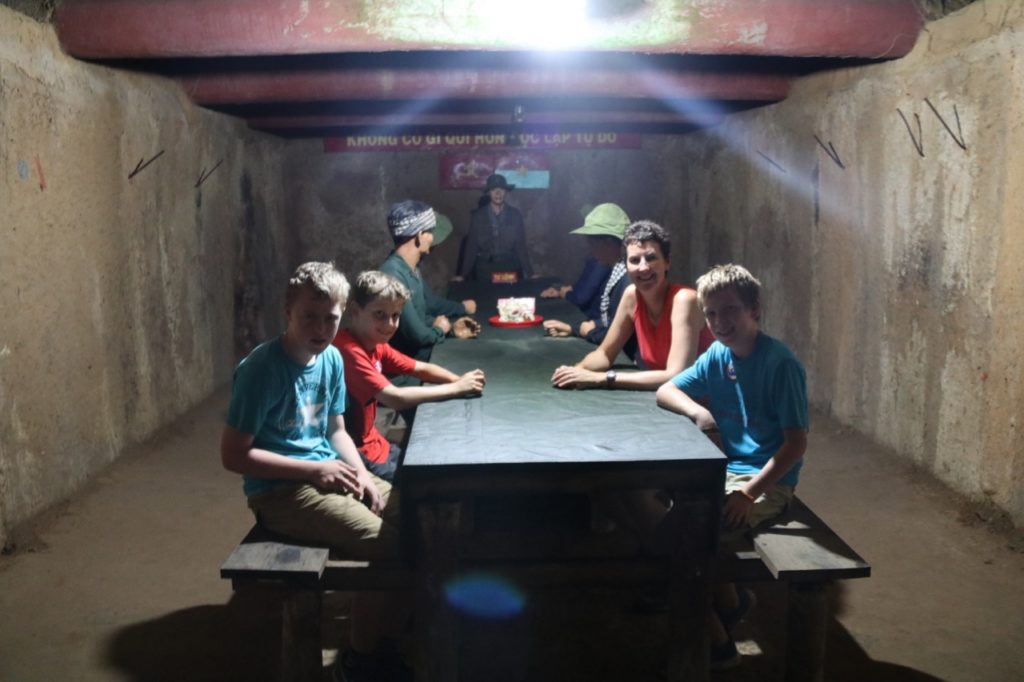
The tunnels allowed the guerrillas to mount surprise attacks wherever the tunnels went. Even within the perimeters of the US airbase at Dong Du. They would then disappear into hidden trapdoors without a trace.
Guarding the tunnels were elaborate traps, designed to slow down and deter US troops in the jungle. This example shows a trap door covering an underground pit, victims would fall onto bamboo spikes laced with poison.
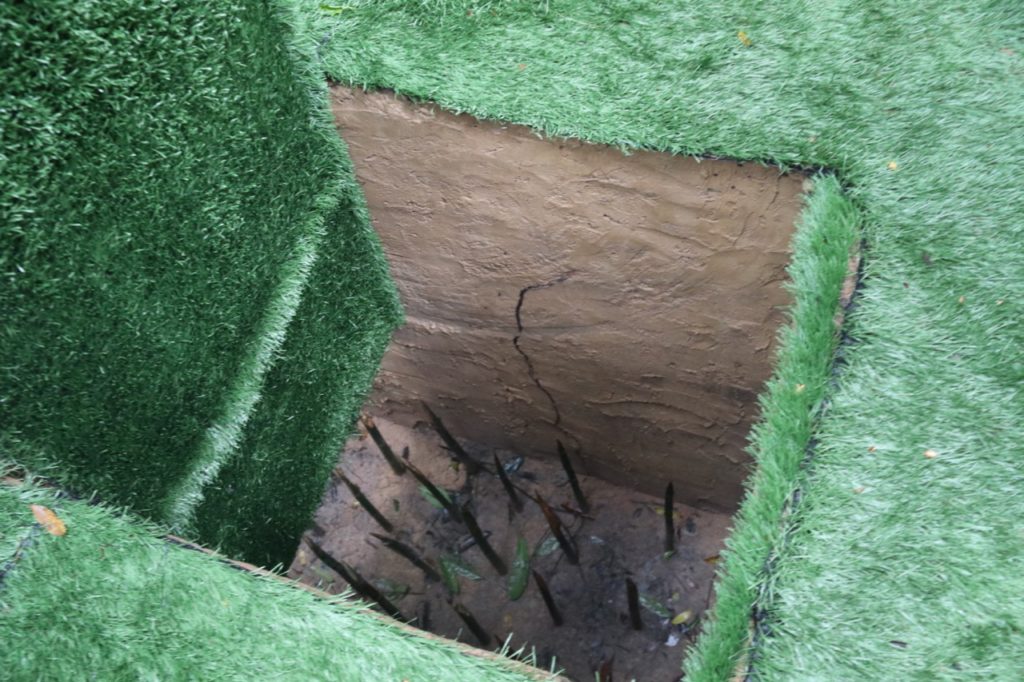
It was a masterful system right under the noses of the US army. The American’s knew they were there they just couldn’t find them. The American’s tried everything – Agent Orange, napalm and constant bombing was used to try to destroy the tunnel system that had eluded them. This area has been called ‘the most bombed, shelled, gassed, defoliated and generally devastated area in the history of warfare’.
Our visit was really interesting and after exploring the tunnels the children are now very keen to learn more about the war. They will certainly get chance to do that over our next few weeks in Vietnam.
WHERE WE STAYED
We stayed at an airbnb, Christina’s, in the heart of Ho Chi Minh City. We would absolutely recommend staying here. The property has several studio and one bedroom apartments, all spotlessly clean. They contain everything you need for a comfortable stay.

